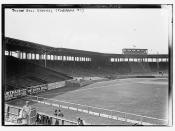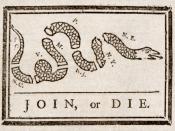The seeds of the American Revolution were sown in the periods of the Enlightenment and the Great Awakening. By the early 1700's nearly 90% of New England's white male population could read and write. This was almost three times the literacy rate of England. Though the average colonist had little to read beyond the family bible and an almanac, ideas were exchanged freely between conversations with neighbors, church sermons and town meetings. The more well to do colonists however could afford costly books and newspapers. This access to the written word sparked an age of optimism where human reason could overcome ignorance and explains the world around them.
The rational world of thought and reason embraced by New England's intellectual elite was rocked in 1737 and 1738 with the terrible diphtheria epidemic where every tenth child died. This tragedy fueled a religious revival that brought people back to faith and a belief in divine power.
Presbyterian William Tennant and Congregationalist James Davenport and their followers broke away from the established clergy. Even enlightenment thinkers such as Benjamin Franklin became enthusiastic followers of the New Light movement as those who broke from tradition came to be known. The Great Awakening and the contrary views held by the New Lights empowered ordinary citizens to be critical of authority figures of the day including the clergy and even their government.
After the French Indian war is when the relationship between the British and the colonists started to get rocky. It was 1763 and the British had control of North America east of the Mississippi. They had just fought for 7 long and expensive years and had a debt that needed to be paid for. So who better to pay it but the people who benefited the most? The British couldn't think of any...


